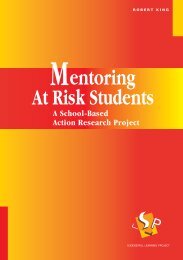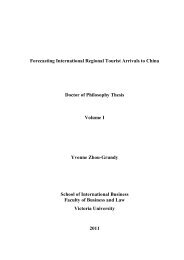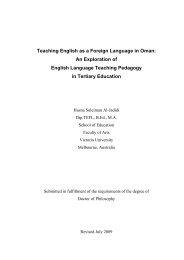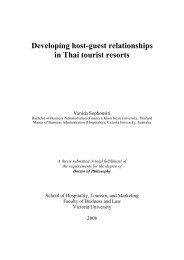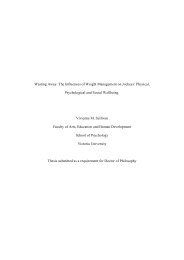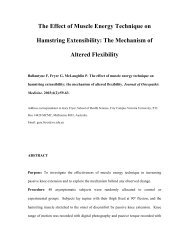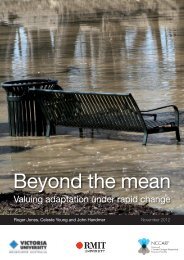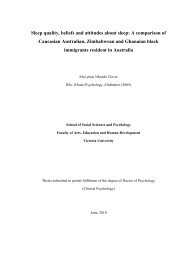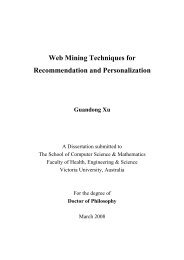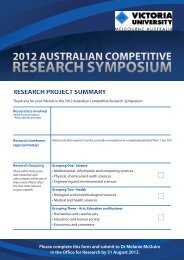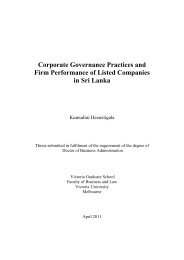Providing Education and Training for At Risk ... - Victoria University
Providing Education and Training for At Risk ... - Victoria University
Providing Education and Training for At Risk ... - Victoria University
- No tags were found...
Create successful ePaper yourself
Turn your PDF publications into a flip-book with our unique Google optimized e-Paper software.
Further, Gambone (1993) (cited in Withers <strong>and</strong> Batten: 35) has established an even briefer listof ‘what the best programs have in common’:• …designed <strong>and</strong> run with a basic underst<strong>and</strong>ing of how adolescents make sense of theworld <strong>and</strong> their experiences• intervention ef<strong>for</strong>ts [which] target the appropriate level <strong>for</strong> each participant• the single most critical source of the support…is the existence of stable, caring relationshipswith adults• …structured <strong>and</strong> managed in a way which promotes <strong>and</strong> sustains activities <strong>and</strong>relationships that enhance or boost the process of adolescent development.Withers <strong>and</strong> Batten note the congruence between these two lists. There are four main featuresof good programs to be derived (35), namely:• the relevance of (students’) cultural or community context is central;• individual needs <strong>and</strong> their initial assessment should be identified;• program staff should be enthusiastic <strong>and</strong> professional in their involvement;• the orientation of the program moves beyond the particular ‘risk’ to broader adolescent/young adult development.Based on these four main features, seventeen more specific features of good programs, derivedfrom this literature Review as a whole, <strong>and</strong> especially redolent of STC principles, suggestthemselves:the relevance of (students’) cultural or community context is centralprograms should locate themselves in a community/learner’s cultureprogram design should reflect this locationlearning activities/teaching strategies should show a commitment to contextoutcomes should have a significance/lead somewhere within their contextindividual needs <strong>and</strong> their initial/entry level assessment should be identifiedparticipation (not retention) is an explicit expectationautonomy (e.g. self direction, responsibility) <strong>for</strong> participants is a key valuecooperation (e.g. groupwork, roles) is central to learningchoice (e.g. pathways) is integral to program’s purposeprogram staff should be enthusiastic <strong>and</strong> professional in their involvementstaff must be committed <strong>and</strong> stableleadership should be committed <strong>and</strong> resourcefulprogram focus must be clear <strong>and</strong> communicableflexibility in engaging participants <strong>and</strong> other staff/agenciesthe orientation of the program moves beyond the particular ‘risk’ to broader adolescent/young adult developmentreferrals to other agencies are essentialcoordination of intervention is requiredpartnerships between program agencies is a strengthcollaboration, to focus on holistic intervention, is also a strengthintegration, or full-service provision, is the most holistic orientation29




